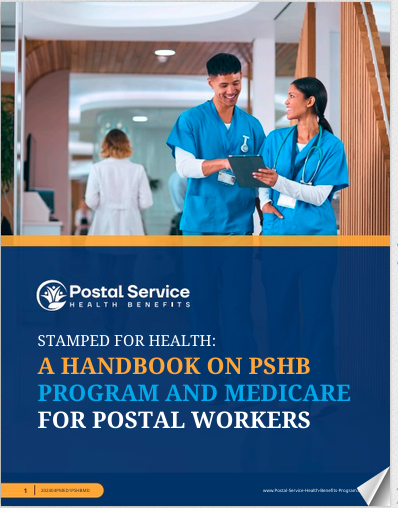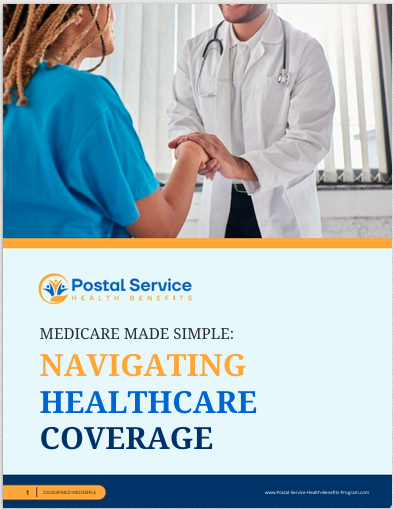Key Takeaways
-
Balancing deductibles and comprehensive coverage involves assessing both immediate and long-term healthcare costs.
-
Evaluate your health needs, financial situation, and plan options to make informed decisions during the Postal Service Health Benefits (PSHB) Program Open Season.
Finding the Sweet Spot: Affordable Deductibles and Comprehensive Coverage
Choosing the right health plan isn’t just about finding the lowest premium or the most extensive coverage. It’s about striking a balance between affordability and ensuring your healthcare needs are met. As a United States Postal Service (USPS) worker or retiree, you have unique considerations under the Postal Service Health Benefits (PSHB) Program. Let’s break down the steps to find a plan that works for you.
What Are Deductibles, and Why Do They Matter?
A deductible is the amount you pay out of pocket for covered healthcare services before your plan starts sharing costs. For instance, if your deductible is $500, you’ll cover the first $500 of your medical expenses before your insurance begins to contribute.
High-deductible plans often come with lower premiums, making them attractive to healthy individuals who rarely visit the doctor. However, if you anticipate regular medical visits or prescriptions, a lower-deductible plan might save you money in the long run despite higher monthly premiums.
Comprehensive Coverage: What Does It Include?
Comprehensive coverage ensures a wide range of medical services are covered, from routine check-ups to emergency care. This type of plan often comes with higher premiums but provides greater peace of mind. Common features of comprehensive plans include:
-
Preventive care (e.g., annual physicals, immunizations).
-
Emergency room visits.
-
Specialist consultations.
-
Prescription drug coverage.
Under the PSHB program, many plans also offer added benefits like dental, vision, and wellness programs, so consider these extras when evaluating your options.
Assess Your Healthcare Needs
The first step in choosing the right plan is understanding your current and anticipated healthcare needs. Ask yourself:
-
How often do you visit the doctor? Frequent visits may justify a plan with lower copayments and deductibles.
-
Do you take regular medications? Prescription costs can add up, so check the plan’s drug formulary and out-of-pocket caps.
-
Do you anticipate surgeries or specialized treatments? Comprehensive plans might offer better protection against high costs.
-
Are you covering dependents? Family plans with lower deductibles can provide better value if you’re insuring multiple people.
Understanding PSHB Plan Options
The PSHB Program offers a range of plans tailored to USPS employees and retirees. While each plan has unique features, they generally fall into three categories:
-
Low-Deductible Plans: Ideal for those expecting frequent medical expenses, these plans reduce upfront costs but come with higher monthly premiums.
-
High-Deductible Plans (HDHPs): Suited for healthy individuals, HDHPs pair with Health Savings Accounts (HSAs) to offset out-of-pocket costs.
-
Consumer-Driven Plans: These provide a balance, offering moderate premiums and access to medical funds to help cover costs.
Balancing Costs: Premiums vs. Deductibles
While premiums are the monthly amount you pay to maintain coverage, deductibles determine how much you’ll pay out of pocket before insurance kicks in. Striking the right balance means:
-
If you rarely use healthcare services: A high-deductible plan with lower premiums may be more cost-effective.
-
If you need regular care: A low-deductible plan can minimize your financial burden, especially if it includes benefits like lower copayments or coinsurance.
The Role of Out-of-Pocket Maximums
Out-of-pocket maximums are critical when evaluating plans. This cap limits how much you’ll pay for covered services in a year. Once you reach this amount, your plan covers 100% of eligible costs. Consider the following:
-
If your medical expenses are high, a plan with a lower out-of-pocket maximum provides better financial protection.
-
If you expect minimal healthcare usage, the maximum might not significantly impact your decision.
Don’t Forget Preventive Care
Most plans under the PSHB Program offer free preventive care, meaning you don’t have to pay for services like:
-
Annual check-ups.
-
Vaccinations.
-
Screenings for conditions like diabetes and hypertension.
Ensure the plan you choose includes robust preventive care options, as this can save you money and improve long-term health outcomes.
Medicare Integration for Retirees
If you’re a Medicare-eligible retiree, coordinating Medicare with your PSHB plan can enhance coverage. For example:
-
Medicare Part A and PSHB: Typically covers hospital services.
-
Medicare Part B and PSHB: Provides outpatient and medical services coverage.
-
Part D Integration: Many PSHB plans automatically include prescription drug coverage through a Medicare Part D Employer Group Waiver Plan (EGWP).
Take advantage of these integrations to reduce out-of-pocket costs, particularly for high-cost medications and extensive medical care.
Reviewing Network Providers
Choosing a plan with an extensive provider network ensures you can access care without high out-of-network charges. Under the PSHB program:
-
In-network services usually have lower copayments and coinsurance.
-
Out-of-network services might incur higher costs or limited reimbursement.
Check if your preferred doctors and hospitals are in-network before making your selection.
Making the Most of Open Season
Open Season, running from November 11 to December 13, is your chance to evaluate and adjust your coverage. Here’s how to prepare:
-
Review the Plan Brochures: Access detailed summaries of benefits to compare deductibles, premiums, and coverage levels.
-
Use Online Tools: Many PSHB resources allow you to estimate total costs based on anticipated healthcare usage.
-
Consult HR or Benefits Specialists: They can clarify confusing terms and provide personalized recommendations.
Weighing the Extras
While core medical coverage is essential, don’t overlook supplemental benefits offered by some PSHB plans, such as:
-
Vision and dental coverage: Important for retirees or families.
-
Wellness programs: Incentives for maintaining a healthy lifestyle.
-
Telehealth services: Convenient for quick consultations without a doctor’s office visit.
These extras can enhance the overall value of your plan.
Take Charge of Your Healthcare Choices
Choosing a plan that balances affordable deductibles and comprehensive coverage requires careful thought, but it doesn’t have to be overwhelming. By assessing your healthcare needs, understanding PSHB options, and preparing during Open Season, you’re well on your way to making an informed decision. The right plan ensures peace of mind and financial protection for you and your family.







